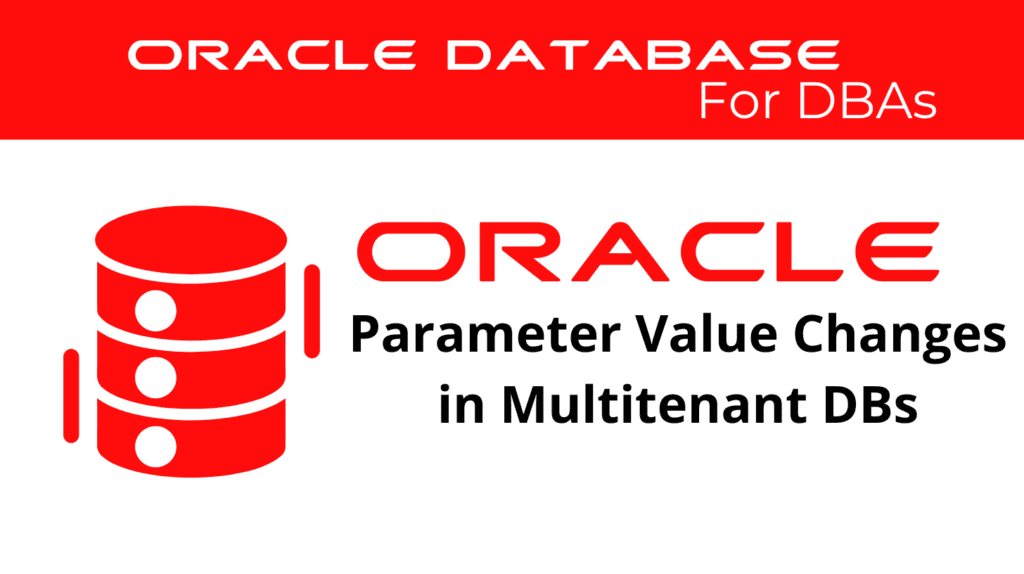
In Oracle databases, particularly in a Multitenant Database environment, evaluating the impact of parameter value changes is crucial. This ensures that the system performs optimally while maintaining stability. Understanding the implications of these changes helps in better database management and optimization. In this guide, we will explore the nuances of parameter value changes and their impact on a Multitenant Database.
Parameter Value Changes
Parameter value changes in a Multitenant Database can have significant effects on performance and resource utilization. Changing these parameters requires careful consideration and understanding of their effects on the database.
For example, modifying the MEMORY_TARGET parameter can affect the allocation of memory resources across the pluggable databases (PDBs). This adjustment can lead to improved performance if done correctly, but may also cause resource contention if not properly managed.
ALTER SYSTEM SET MEMORY_TARGET = 4G SCOPE = BOTH;
Similarly, adjusting the PROCESSES parameter, which dictates the maximum number of operating system processes that can be used by the database, can influence the ability to handle multiple simultaneous connections and operations.
ALTER SYSTEM SET PROCESSES = 500 SCOPE = SPFILE;
Understanding these changes and their potential impacts is essential for maintaining a stable and efficient database environment.
Multitenant Database Impact
The impact of parameter changes on a Multitenant Database can be profound, affecting both individual PDBs and the Container Database (CDB) as a whole. It is important to evaluate these changes carefully to avoid unintended consequences.
For instance, changing the SGA_TARGET parameter affects the shared memory available to all PDBs within the CDB. Properly tuning this parameter ensures efficient memory usage and can prevent performance bottlenecks.
ALTER SYSTEM SET SGA_TARGET = 2G SCOPE = BOTH;
Additionally, adjusting the PGA_AGGREGATE_TARGET parameter, which sets the total amount of Program Global Area (PGA) memory available to all server processes attached to the database, can optimize query performance and resource allocation.
ALTER SYSTEM SET PGA_AGGREGATE_TARGET = 1G SCOPE = BOTH;
These changes must be tested in a controlled environment before being applied to the production database to ensure they achieve the desired effect without causing disruptions.
📢 You might also like: Performance Management in CDBs and PDBs (Category: Oracle Database Admin)
Parameter Values
Understanding the specific parameter values and their roles in the database is crucial. Each parameter has a distinct impact on database behavior and performance.
For example, the LOG_BUFFER parameter specifies the amount of memory allocated to the redo log buffer. Increasing this value can improve performance for databases with high transaction rates.
ALTER SYSTEM SET LOG_BUFFER = 64M SCOPE = SPFILE;
Similarly, the DB_BLOCK_SIZE parameter sets the size of the database blocks, which can influence the performance of I/O operations. Choosing the appropriate block size based on the workload and storage characteristics is essential.
ALTER SYSTEM SET DB_BLOCK_SIZE = 8192 SCOPE = SPFILE;
By understanding these parameter values and their effects, administrators can make informed decisions to optimize their databases.
Configuration Impact
The overall configuration impact of parameter changes must be considered to maintain a balanced and efficient database environment. Adjusting parameters like CPU_COUNT, which sets the number of CPUs available for database operations, can directly influence performance and scalability.
ALTER SYSTEM SET CPU_COUNT = 4 SCOPE = SPFILE;
Moreover, changing the OPEN_CURSORS parameter, which sets the maximum number of open cursors a session can have at once, can affect the ability of applications to handle multiple queries simultaneously.
ALTER SYSTEM SET OPEN_CURSORS = 300 SCOPE = BOTH;
Evaluating the configuration impact of these changes ensures that the database can handle the required workload without compromising stability or performance.
See more on Oracle’s website!
Conclusion
Evaluating the impact of parameter value changes in a Multitenant Database is a critical task for database administrators. By understanding and carefully managing these changes, administrators can optimize performance, maintain stability, and ensure efficient resource utilization. This guide provides a foundation for making informed decisions about parameter changes, helping to keep Oracle Multitenant Databases running smoothly.
Be Oracle Database Certified Professional, this world is full of opportunities for qualified DBAs!





